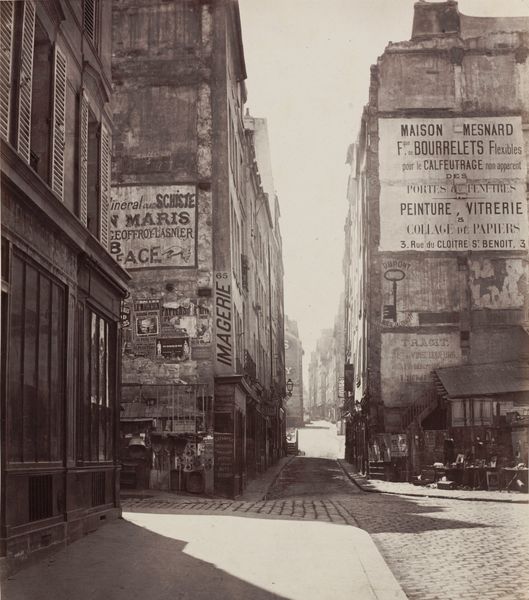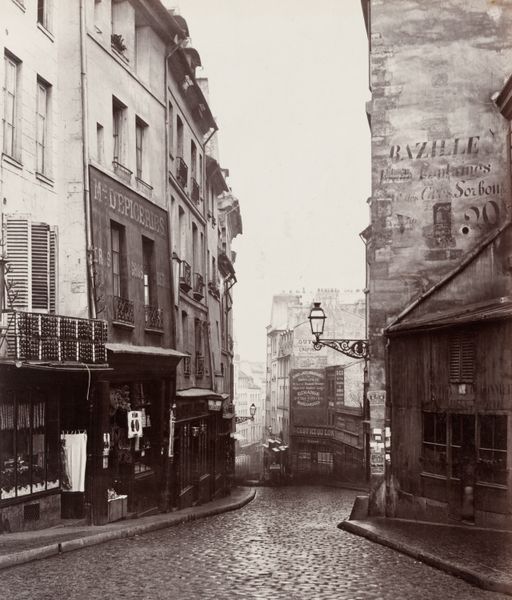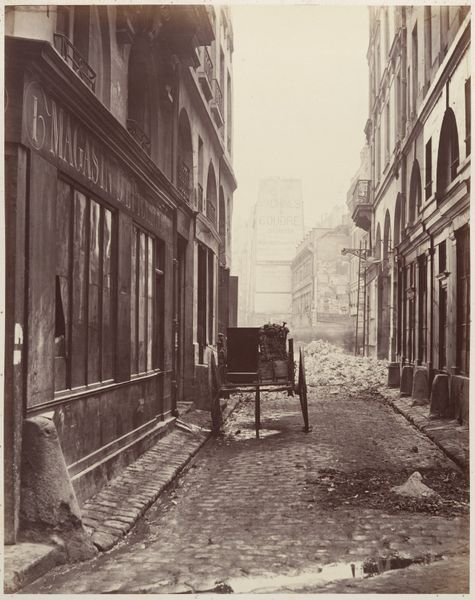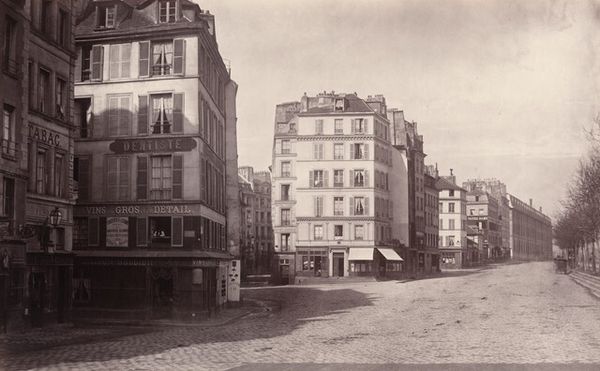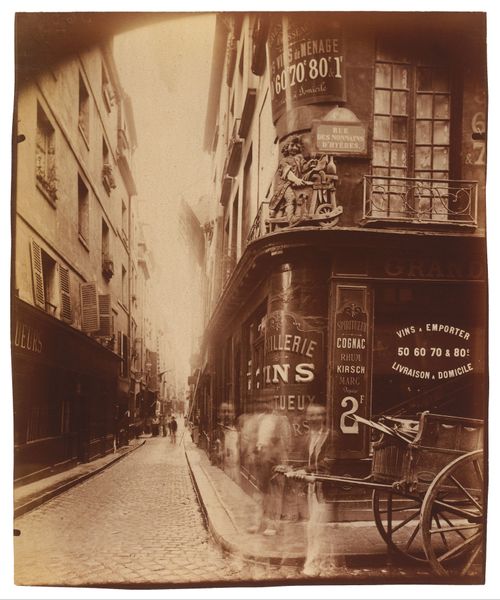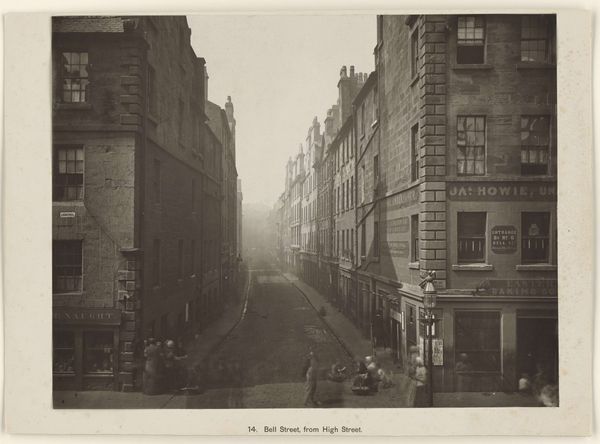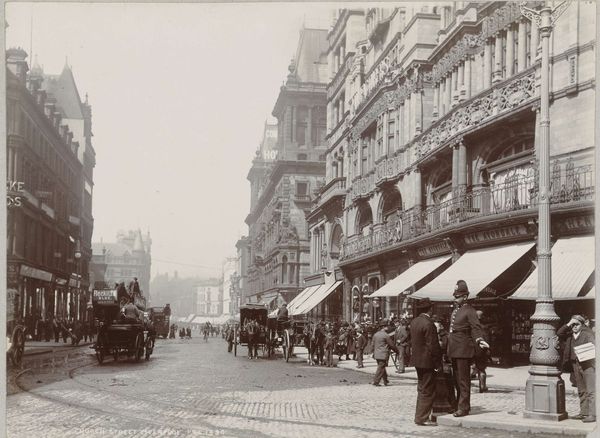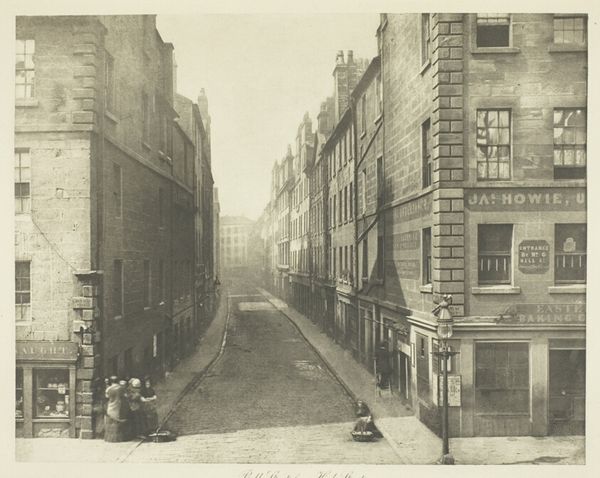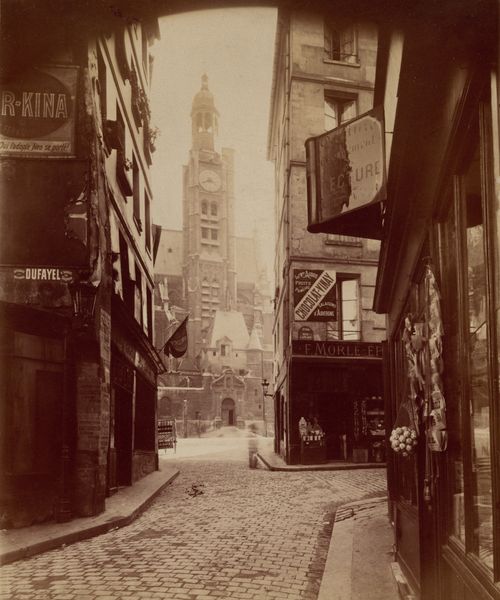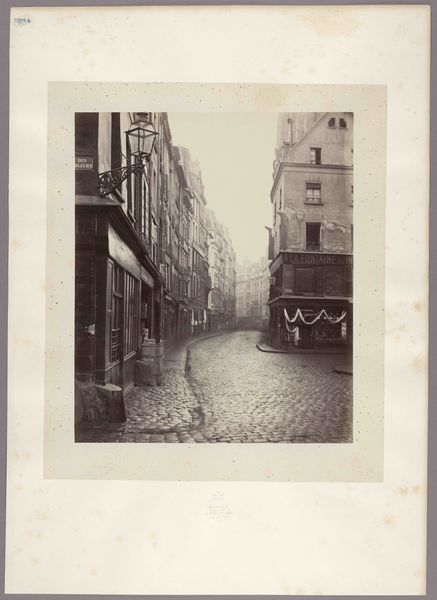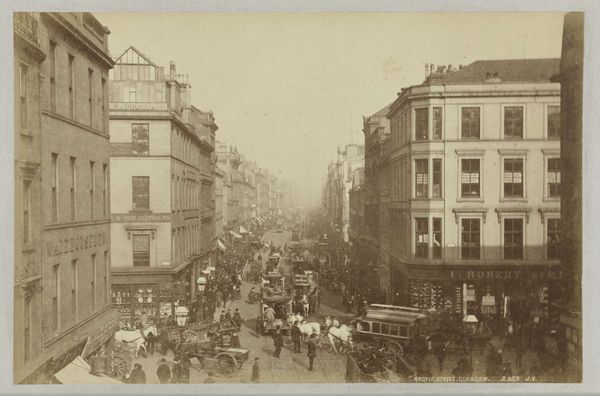
Rue des Lombards, from the rue des Lavandières Sainte-Opportune 1864
0:00
0:00
photography
#
cityscape photography
#
urban landscape
#
16_19th-century
#
cityscape
#
street view
#
street shot
#
street lighting
#
urban cityscape
#
historic architecture
#
street-photography
#
photography
#
city scape
#
cityscape
#
genre-painting
#
realism
#
historical building
Dimensions: image/sheet: 29.5 × 27.1 cm (11 5/8 × 10 11/16 in.)
Copyright: National Gallery of Art: CC0 1.0
Curator: Charles Marville captured this view of the Rue des Lombards from Rue des Lavandières Sainte-Opportune in 1864. This silver print provides a glimpse into the changing urban fabric of Paris during the Second Empire. Editor: It feels almost ghostly. The narrow street disappearing into the fog, the tall buildings leaning in...there's a real sense of isolation, even with hints of commerce and daily life. Curator: That atmosphere is intentional, I think. Marville was commissioned to document the city before Haussmann’s grand renovations reshaped it. This photograph acts as a record of a soon-to-be-vanished Paris, those pre-modern alleyways that fostered particular kinds of social interactions. Editor: The image certainly makes you wonder about the people who lived and worked here, their relationship to this space. Were these tight-knit communities uprooted and displaced by the modernization? It is interesting to wonder if their stories were documented and if there were cultural costs of that so-called progress? Curator: Exactly! Consider also, what kind of stories is he choosing to include, and exclude? Editor: Absolutely. I see an absence of human presence. Is this simply because of the long exposure times required at the time? The nearly empty streets raise further questions for me; does this image serve a function for a certain demographic of people, perhaps idealizing a certain solitude? Curator: Perhaps... And let's also look at what he emphasizes, such as the facades and street signage. He turns the photograph into a kind of inventory. His work gained considerable recognition, it was used by municipalities who would track property values...a direct effect in the development of Paris into a hub of trade and finance. Editor: Looking at the built environment from today's perspective, you are correct, the photograph speaks volumes, and even echoes into the current moment! Curator: A truly invaluable document for historical context and artistic merit!
Comments
No comments
Be the first to comment and join the conversation on the ultimate creative platform.
